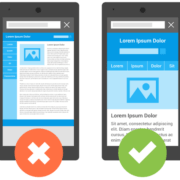Top 7 Google Ranking Factors
It’s hard to know which Google ranking factors really matter and which ones are just fluff. Especially since there are over 200 of them. Here’s how to clear that up.
Understanding the most important factors will help you optimize your website to rank higher in Google’s search engine results pages (SERPs). We’ve compiled a definitive list of Google ranking factors that can make or break your search optimization strategy. This guide will walk you through each factor and help you determine what you should focus on for maximum impact!
Backlinks
Google has said that they are planning to move away from backlinks in the future, but for now they still remain the most important ranking factor for your pages. Except now you have to be very straightforward with your SEO strategies — your links have to come from a variety of high authority websites that are similar to yours. Furthermore, there are Google sources who say that freshness and traffic may also be important backlink metrics.
The goal is still the same: get people visiting your website through search engines like Google and Bing. But now you need to focus more on getting links from sites where people are likely to click on them because they’re interested in what you’re selling or offering up as content.
Relevance
How do you know what your potential customers are looking for?
Google has systems in place to help it understand what searchers want. You, too, need to understand this if you want to rank. For example, most of the top results for “air fryer” are blog posts with top picks. This indicates that searchers are in research mode, not buying mode. As a result, it probably makes the most sense to target this keyword with a blog post over an e-commerce category page.
Freshness
Freshness is a query-dependent ranking factor. It’s stronger for queries that call for fresh results, so if your keywords are on the right side of this equation, you should be good to go.
However, if you’re looking to rank highly for queries that don’t demand freshness, like “how to solve a rubik’s cube” or “how to make origami animals in 5 minutes,” then updating your page often or publishing new articles isn’t going to help you.
If freshness is a big deal for your keyword, then update your page often or publish new articles so that Google can see that you’re staying current with demand.
Google My Business
Creating a Google My Business listing is the single most important thing you can do for your local SEO. It helps establish your company as an entity, which in itself is a great asset to your SEO. Even more, it will skyrocket your local search performance.
Once you create a listing, it becomes eligible for the local business panel as well as Google maps, opening your business to nearby searchers. For example, if someone is shopping and stopping for a coffee, your Google My Business listing will help show you in the search results of a nearby option.
In addition to being eligible for the local business panel and Google maps, creating your Google My Business listing will help make sure that you’re showing up in search results across other platforms like Yelp or Bing Places. The more ways people can find out about you, the better!
Mobile Friendliness
Mobile-friendliness is a ranking factor on mobile since 2015. When Google moved to mobile-first indexing in 2019, it became a ranking factor on desktop too. If you don’t have a responsive design, your site may be losing out on traffic and conversions. You can check this by using the Mobile Usability report in Google Search Console to see if you have any issues.
Page Speed
Page speed is another ranking factor that has been available since 2010 and became available on mobile in 2018. Google has used various methods to measure page speed over the years but as of recent it only uses Core Web Vitals (CWV).
Core Web Vitals (CWV) are three metrics that Google uses to measure a page’s loading performance, interactivity, and visual stability. Largest Contentful Paint (LCP), First Input Delay (FID), and Cumulative Layout Shift (CLS) are the three metrics that make up CWV.
Here’s a quick way to get a sense of your site’s CWV performance:
- Ask Google to crawl your website
- To request a crawl of individual URLs, use the URL Inspection tool.
Keep in mind that there’s a quota for submitting individual URLs and requesting a re-crawl multiple times for the same URL won’t get it crawled any faster.
Intrusive Dialogs
Google and other search engines love to index content, but they don’t like it when your website is hard to use.
Dialog boxes and interstitials are a great way to direct users’ attention to something that is important, but if you make them too intrusive, users will be annoyed and frustrated. You want your visitors to feel like they have control over their experience on your website—and if they’re constantly being interrupted by pop-ups or other obstructions, it’s harder for them to do that.
Overlay ads are another good example of this kind of thing—they’re not necessarily bad in themselves, but if they interrupt the user experience too much then people will stop visiting your site as often.
More From Onimod Global
Looking for an agency to help your small business with your search engine optimization? Reach out to us here!
Onimod Global is a digital marketing agency that helps startups and small businesses grow. More importantly, we are a Google Partner, meaning we can help with all of your Google Marketing needs.
We release the latest digital marketing news and essential marketing tips every Tuesday and Thursday! To catch up on the top digital marketing news and trends, click here. To get started, contact us today.










